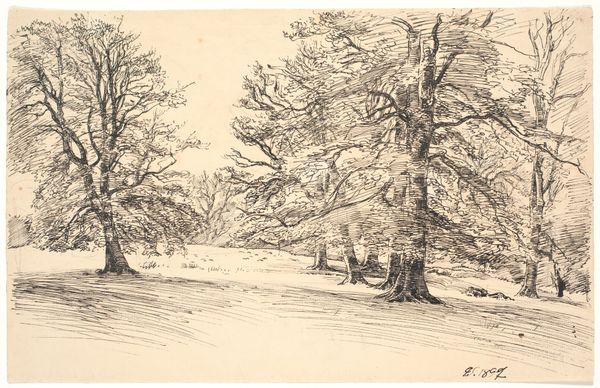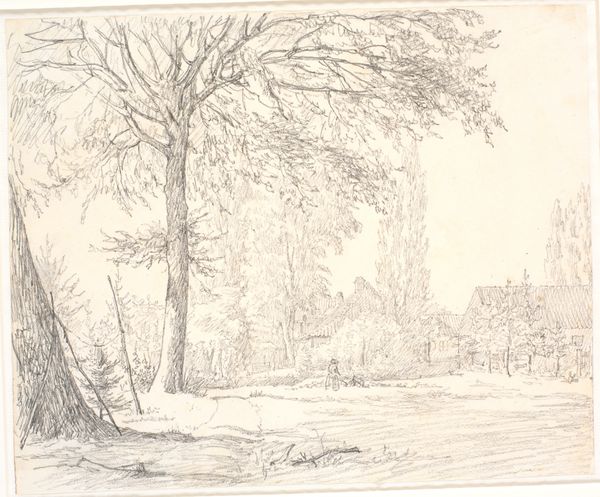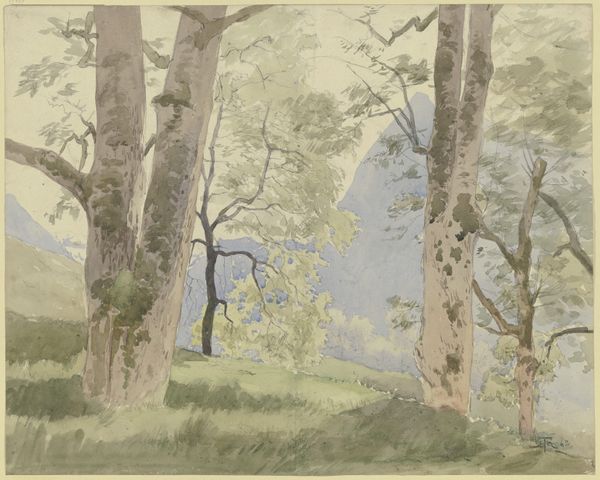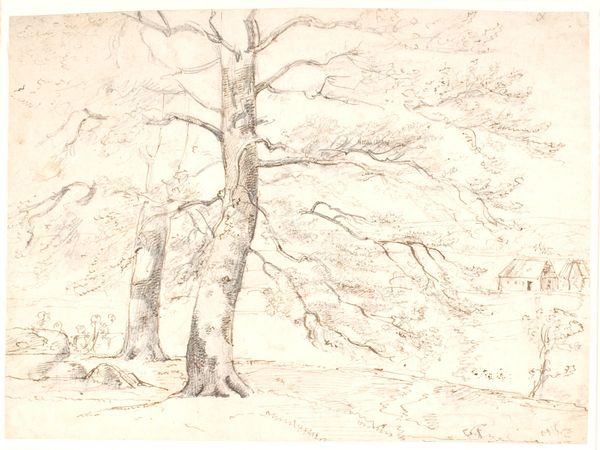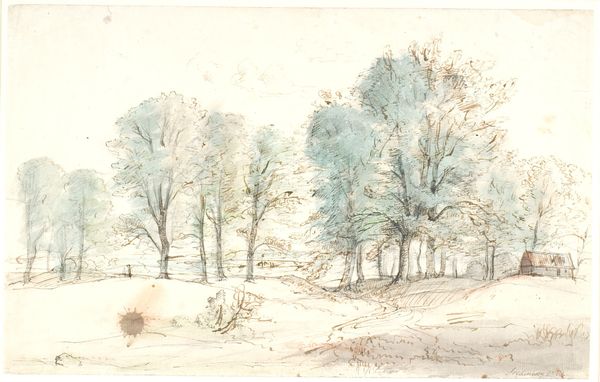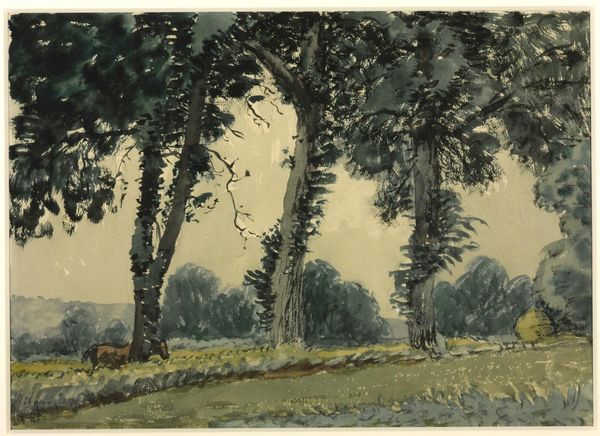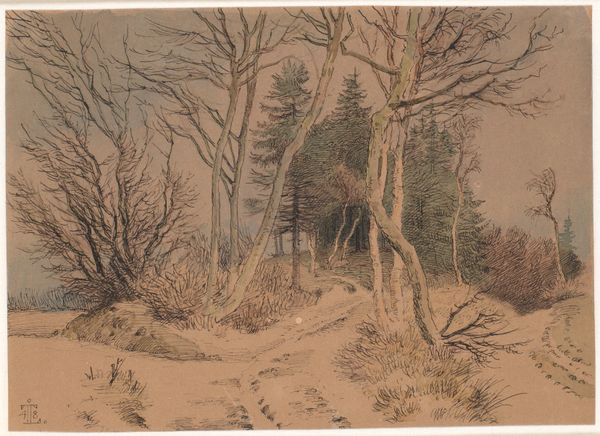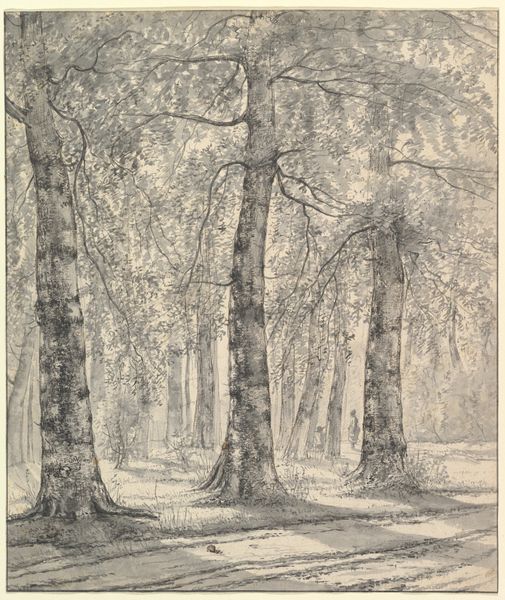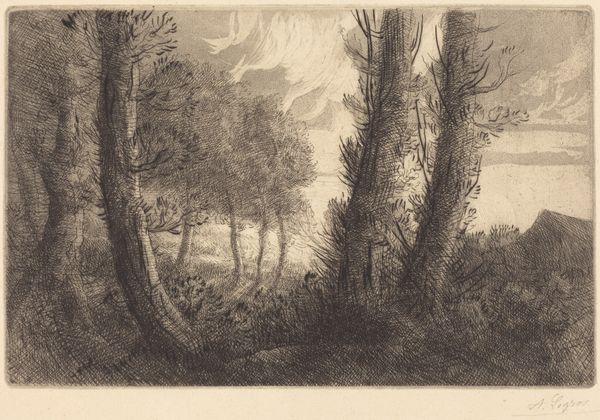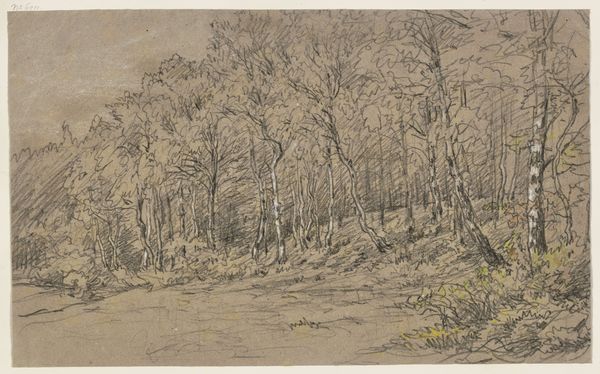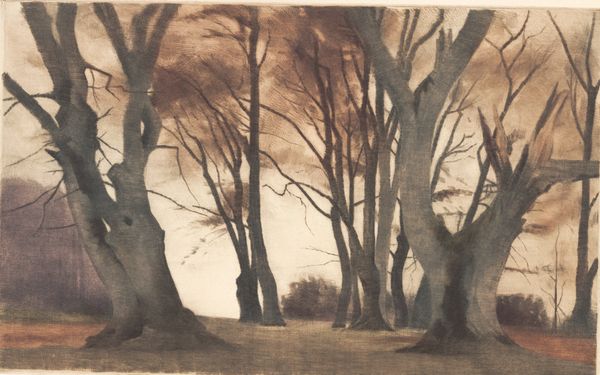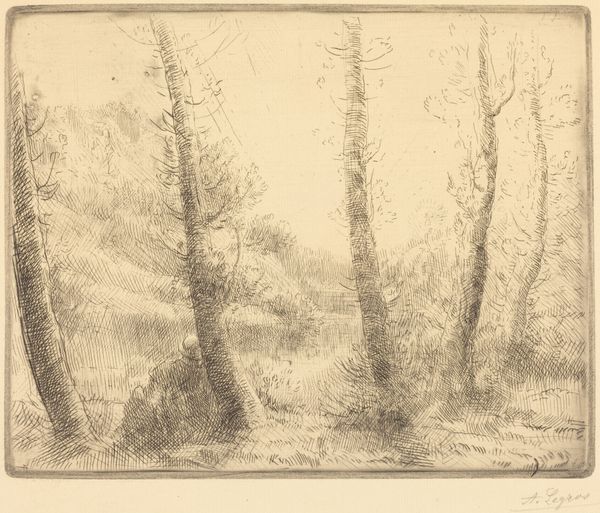
Dimensions: 328 mm (height) x 207 mm (width) (bladmaal)
Curator: I see a group of stoic figures guarding something unspoken. Is this the Danish landscape hiding a secret? Editor: That's a lovely initial response! This is Niels Skovgaard's "Hoppehøj ved Nysø," created in 1896. Skovgaard's plein-air approach captures not just a scene but a relationship to nature, informed by a prevailing sense of national romanticism, in addition to emerging impressionist trends. The medium is paper and executed with a mixture of watercolor and drawing. Curator: Interesting, you're pointing out the inherent construction within what feels at first viewing so "natural". What can we make of the process of its making? It appears that the application of water based pigments serves only a mimetic function and is secondary to line which drives composition. Editor: Absolutely. The process itself speaks to the era’s artistic negotiation. The materiality tells its own story: cheap paper allowed greater dissemination of work for emerging artists who couldn't access conventional canvases, watercolor provided speed to create ‘impressions’ and it shows an intersection of access and expression which complicates our narrative of art making in Denmark, wouldn’t you say? Curator: I do. But I can’t help feeling how nature functions as the subject and backdrop to the theater of the everyday here. Trees cluster as the stage that directs the viewers eye through time and lived experience. Editor: True, there is this foregrounding of place in identity and lived realities, it's not separate from material processes; and I see Skovgaard here attempting to merge material observations and cultural heritage. I feel in it a real conversation around our relation to the landscape, what do you feel about the implications and agency the image and artwork brings up, ultimately? Curator: Well, this pushes me to reconsider nature, history, identity as components that constitute both experience and image. This has me wondering of course, what exactly are we seeing, in relationship to those who might once see the piece in it’s original context, the cultural climate, then, versus what we observe today... Editor: Yes, placing emphasis back to materiality is crucial. Perhaps in thinking about labor and accessible materials, and in paying close attention to his mark-making we will continue challenging established cultural and hierarchical boundaries and celebrate a multifaceted art.
Comments
No comments
Be the first to comment and join the conversation on the ultimate creative platform.
